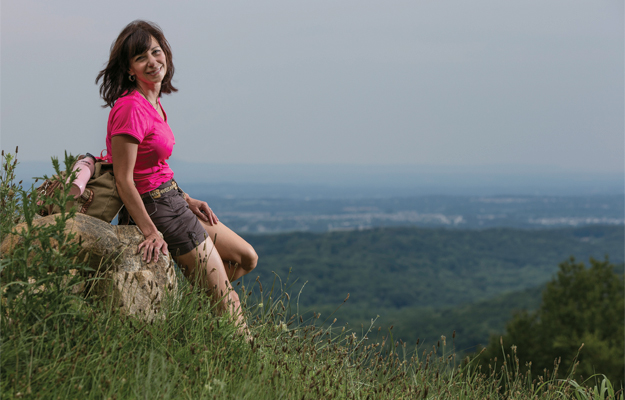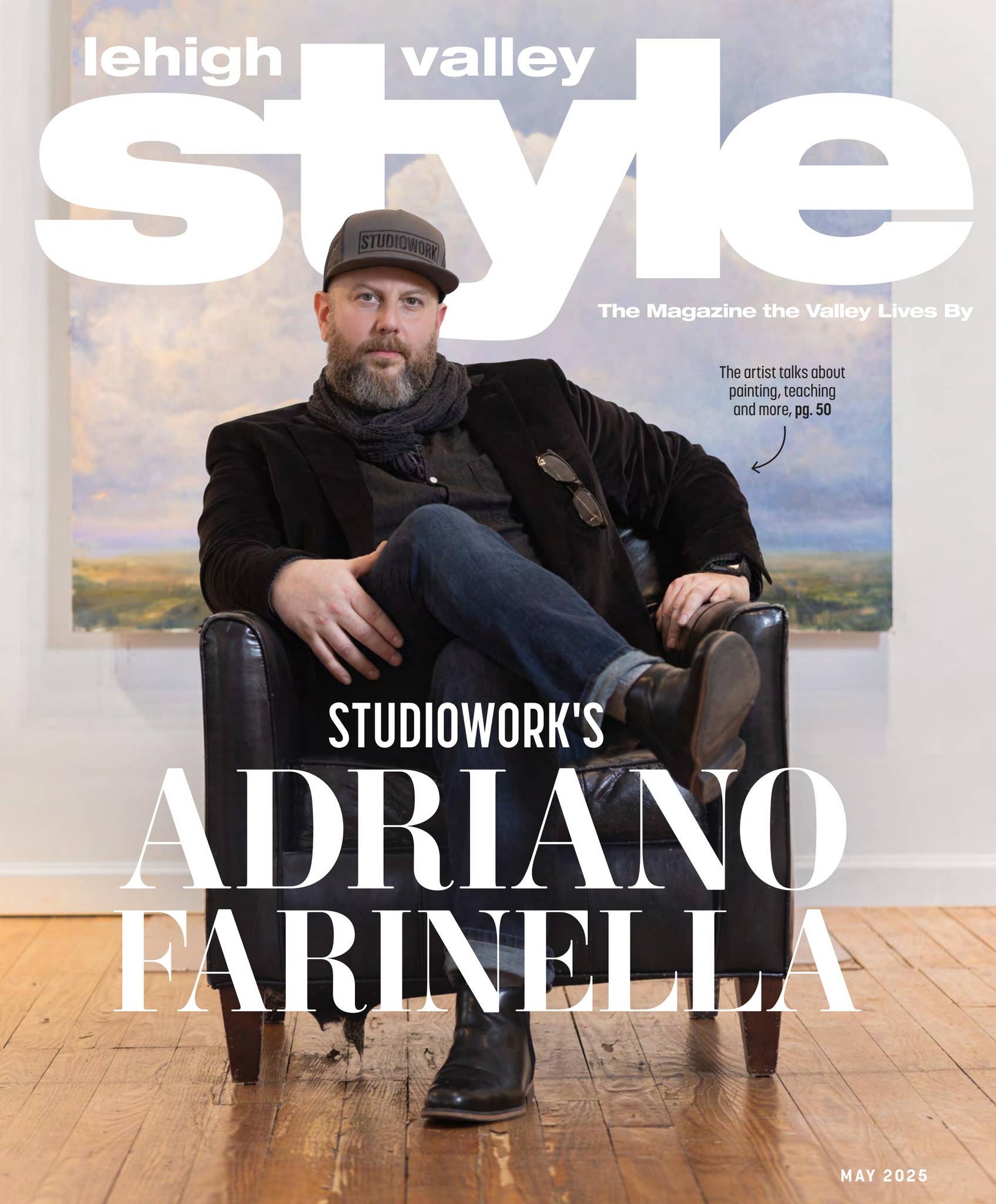
The Dreaded Diagnosis
Donna Turner knew what her doctor was going to say before he said it.
“I just had a feeling,” she says.
Breast cancer.
The Upper Milford Township interior designer, wife and mother of two was 50 years old when she received the news in January of 2007.
Lori Dzojko, of Longswamp Township, was blindsided when she got the same news 10 months later. She had no family history of breast cancer or risk factors for the disease. Immediately after the diagnosis, her thoughts turned to her husband and to her two young sons.
“Will I see them graduate from high school?” Dzojko recalls asking herself.
Breast cancer had bloomed on Dodi Handwerk's family tree—her mother was diagnosed at the age of 64—and so the Slatington wife and mother of two young daughters was insistent on getting a mammogram before the recommended age of 40. Her doctor obliged to put her mind at ease. In 2008, at the age of 38, after undergoing her very first mammogram, Handwerk was told she had ductal carcinoma in situ (DCIS), an early form of breast cancer.
“I was floored,” Handwerk says.
In an instant, all three women were forced to confront the same two terrifying questions that overwhelm hundreds of thousands of new breast cancer patients every year:
Am I going to die? And, what do I do now?
Turner went into attack mode.
“I went after it with everything I had,” she recalls. “I never once thought, ‘I'm not going to beat this thing.'”
Turner says she sought three professional opinions before deciding on four rounds of chemotherapy and a double mastectomy as her course of treatment. Her recollection of the chemo regimen? “It's heinous. It sucks.”
Even so, Turner says she missed only a few weeks of work and forced herself to maintain her regular gym routine. The stability proved vital to her mental wellness, especially as the harsh medical treatments ravaged her body.
“You need to pick one thing you can control,” she says. “You need to keep driving the train.”
Dzojko says her faith in God was one constant she could cling to after her diagnosis.
“[Breast cancer] isn't the death sentence it used to be.”
In fact, she believes an act of divine intervention led to the discovery of her cancer in the first place. A suspicious mark on the outside of her breast compelled the then 42-year-old to visit her doctor. A mammogram (her first) determined that that particular mark was nothing harmful. But that same mammogram revealed the cancer in her left breast. Dzojko calls the mark her “God sign”: had it not demanded her attention, the disease may have continued to grow undetected, delaying her treatment and hampering her chances for survival.
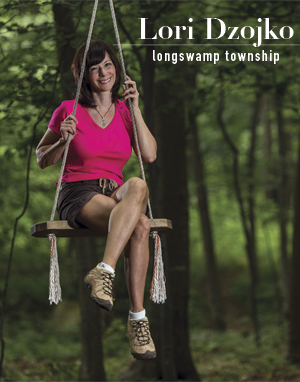
In March of 2008 she found out she would need to undergo four cycles of chemotherapy and a mastectomy.
“That's not something you want to hear,” Dzojko says.
She remembered a neighbor of her mother's dying of breast cancer when the woman was in her 40s. But Dzojko, like Turner, says she chose to maintain a positive outlook.
“[Breast cancer] isn't the death sentence it used to be,” she says.
Handwerk was initially told that radiation would be enough to attack and hopefully obliterate the cancer in her breast. But a lumpectomy revealed the disease was already present in three different ducts, so her doctor changed course and recommended a mastectomy. That, she says, was the toughest thing to hear during the course of her medical battle.
“It went from essentially stage zero to something a lot worse,” Handwerk says.Even so, Handwerk refused to let the diagnosis consume her.
“I just tried to go about every day, business as usual,” Handwerk says. “I had three months to wait until my mastectomy, with nothing to do but think about what was coming. I was anxious to have the surgery, recover and get back to being me—but I had to be patient.”
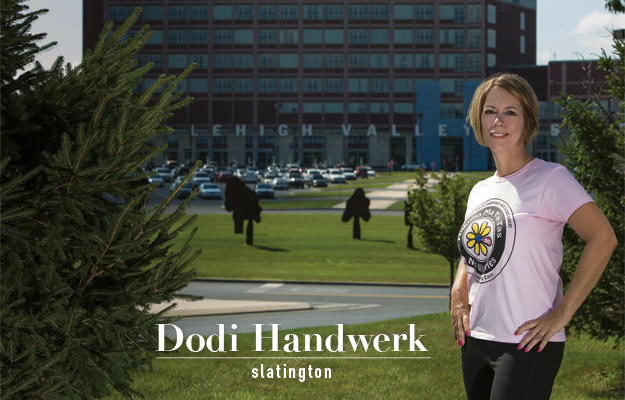
The Reconstruction Option
All three women opted for reconstructive surgery following their mastectomies. Dr. Robert Kevitch, of Aesthetic Surgical Associates in Allentown, says breast cancer patients can choose to have the surgery immediately following the removal of one or both breasts, or at a later date down the road. The former option, he says, has caught on in popularity in recent years.
“When I came to town in 1990, I don't think anybody offered it to patients,” Kevitch says.
But Kevitch says some women can feel apprehensive about combining the procedures, because the reconstruction adds another three to six hours of surgery time to the typical mastectomy.
Still, Handwerk believes the “all-at-once-approach” made it easier to face the new silhouette that greeted her in the mirror after her surgery.
“I think my mindset would have been a lot different if I had woken up with just one breast instead of two,” she says.
Patients who are considering reconstruction must also decide how they want the breast to be rebuilt. The American Cancer Society says it can be formed artificially (often from saline), naturally (using the patient's own tissue), or through a combination of both. Then there are issues of infection, scarring and symmetry to be concerned about. Kevitch says the process can seem overwhelming, and so communication is key between the patient and surgeon. He encourages all patients to explore these questions before going under the process:
Am I a good candidate for the procedure?
Where and how will the procedure be performed?
What surgical technique is recommended for me?
How long will the recovery be?
What are the risks and complications of the procedure?
Kevitch also recommends the book, A Woman's Decision, for patients who are looking for a guiding light to lead them through the myriad of pre- and post-surgery anxieties. A pair of plastic surgeons and a medical journalist authored the book.
“It has diagrams, before-and-after pictures, and descriptions of experiences by women who have had these types of surgeries,” says Kevitch. “There's also a chapter for the spouse to read.”
The Support System
All three women credit their family and friends with playing vital roles in all stages of their treatment and recovery process.
Turner allowed her daughter, Leah, to shave her head before she even began chemotherapy. She would not allow it to deprive her of that right. She was in the hospital recovering from her double mastectomy on the night of her daughter's high school homecoming dance.
“Later that night I awoke to Leah kissing me on the cheek,” Turner recalls. “She said ‘I wanted to tuck you in, Momma.' That was one of the most touching moments I have ever had with my daughter.”
When it came time for Dzojko to shave her head, she handed the clippers to her husband, Tim.
“[It was] a very personal moment to say the least, and one I would enlist to no one else but him,” Dzojko says.
“Everyone around you is trying to be strong for you...”
She also entrusted her husband to sift through the mountain of paperwork that accompanied her chemotherapy treatments, and to pick up the slack around the house when chemo KO'ed her energy.
“He played the role of husband, father, nurse, cook and maid,” Dzojko says. “He was my tissue-bearer and, most of all, he was the arms that would hold me at the end of the day.”
But all three women also discovered the downside of leaning too heavily on those who are closest to them. A cancer battle isn't a one-person crusade; it's often as equally grueling and distressing for the supporters who are in the trenches with the patient.
“Everyone around you is trying to be strong for you, and you're trying to be strong for them,” says Turner. She wasn't aware of how profoundly her cancer battle had affected her family until her daughter wrote a school paper on the experience.
“Children who are watching their parents go through cancer treatment experience an entirely different and life-changing process,” says Turner.
Handwerk agrees. She, too, was once on the outside looking in, as a loved one struggled with the disease.
“It was harder on me when my mom went through her treatment than when I went through mine,” Handwerk says. “With her I was constantly worried. For me I just thought, ‘Let's do this.' I just wanted to treat it as something I had to do, like getting my appendix out.”
For those reasons, many cancer patients, including Turner, Dzojko, and Handwerk, seek solace in support groups. All three women joined Lehigh Valley Health Network's Support of Survivors (or SOS), which offers a hotline, group meetings and workshops for cancer patients in all stages of treatment and recovery.
“There's nothing like having someone walk alongside you who's been there, done that,” says Dzojko.
“If it wasn't for the group, I don't know where I would have gone,” agrees Handwerk.
St. Luke's University Health Network offers similar services at its Anderson Cancer Center in Bethlehem Township. Also, the Cancer Support Community of the Greater Lehigh Valley, a nonprofit organization, offers free classes in everything from art to corrective makeup to hide discolorations and scars.
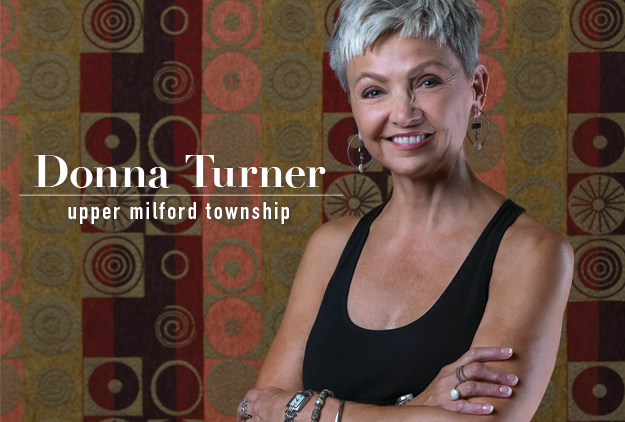
The “Now Whats?”
But what happens when breast cancer patients enter a new phase of reality, in which the frightening but reliable routine of doctor appointments, medical tests and daily drug treatments reaches the finish line?
Turner's daily prescription drug regimen ended in February. She says the sudden change prompted fears that she was no longer being proactive about staving off a cancer recurrence.
“You get used to being on that drug,” Turner says. “Then it just stops. Your doctors are done with you, but it's not over for you.”
Handwerk won't stop taking the Tamoxifen she was prescribed for a few more years. While she says she's not overly apprehensive about putting that part of her treatment behind her, she says she does wonder what she'll do to curb concerns that may arise five or ten years down the road.
“After you go through the reconstruction part, the surgeon may not always know the long-term outcome for all of it,” Handwerk says.
Michelle Brandt, Counselor for Cancer Support Services at St. Luke's, acknowledges the need for more options for survivors who have successfully completed treatment.
“Years ago, everything was focused on treatment,” Brandt says. “But now more women are surviving, so the focus is starting to shift.”
According to the American Cancer Society, death rates from breast cancer have been declining since about 1989, with larger decreases in women younger than 50. Hospitals accredited by the Commission on Cancer of the American College of Surgeons are being required to provide more survivorship programming for all cancer survivors by 2015.
Kathleen Sevedge is the Director of Cancer Support Services at Lehigh Valley Health Network. She says LVHN already offers a biannual, educational workshop for breast cancer survivors once they complete their treatment.
“They are provided a meal, a speaker and small workshops on topics such as nutrition, sexuality, menopause, yoga, exercise and lymphedema,” explains Sevedge.
...staying involved gives them a sense of “paying it forward” to the next woman...
Turner has done some digging on her own to find out what options are available. She says she was surprised to learn that many insurance companies are required to pick up the tab for custom-fitted bras for breast cancer patients and survivors. She wonders what else is out there for survivors who, like her, continue to build up the cushion between their initial diagnosis and their post-cancer reality.
“It's just a very gray area,” she says.
On the other hand, Dzojko didn't dread the day her treatment wrapped up in June of this year.
“I have a sense of completeness, of moving on,” she says.
But that doesn't mean she's forgotten the grueling journey that's brought her to where she is today. Dzojko says it's important to hold on to those memories, even though they represent a painful part of her past.
“I can go there in a moment's notice,” she says. “I don't ever want to not be able to reconnect with those moments, just for the sake of walking alongside someone else.”
All three women have volunteered in various capacities with the SOS group and have taken part in local events that raise money for breast cancer research. They say staying involved gives them a sense of “paying it forward” to the next woman who has to walk a mile in their shoes.
“I really do cherish being able to help someone who's going through what I went through,” Handwerk says.
Dzojko has this advice for anyone who's standing where she, Turner and Handwerk once stood: at square one of an overwhelming yet ultimately empowering odyssey of uncertainty, fear, change and perseverance.
“I would say to them, ‘You will live again. You will laugh again.'”


